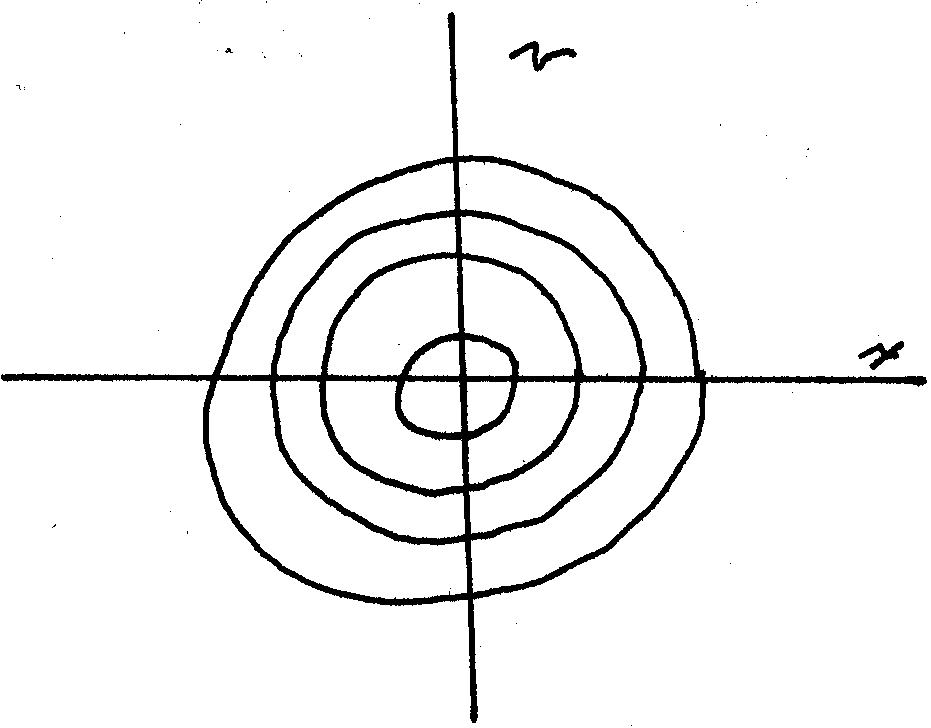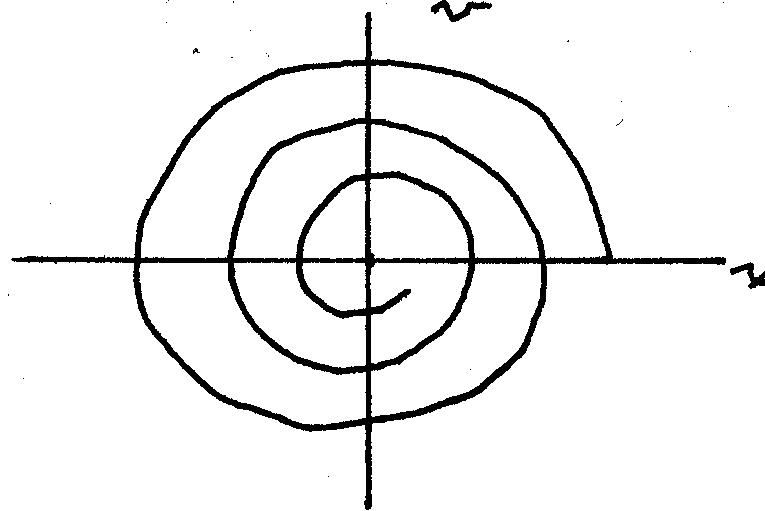Next: Modified Harmonic Oscillator - Up: Duffing_story Previous: Coding a Solution of
Harmonic Oscillator limit - ![]() case
case
With ![]() and
and
![]() all equal to zero
this system
is a simple harmonic oscillator (mass=1).
all equal to zero
this system
is a simple harmonic oscillator (mass=1).
The solution of the model produces a phase space
portrait in ![]() versus
versus ![]() of simple
concentric circles surrounding the Fixed Point at
the origin. The Fixed Point of a set of ODEs
is at coordinates that render the
RHS of the ODEs equal to zero.
of simple
concentric circles surrounding the Fixed Point at
the origin. The Fixed Point of a set of ODEs
is at coordinates that render the
RHS of the ODEs equal to zero.

Use the general modular RK4 ODE solver program
to solve the Duffing system, using ![]() ,
, ![]() ,
,
![]() ,
, ![]() and
and ![]() in the code.
Use
in the code.
Use ![]() .
.
Check that the energy of each trajectory is conserved by the numerical solution.
Dissipative System
With ![]() not zero, the system becomes a damped harmonic
oscillator. This term takes energy away from the
motion of the steel beam. All trajectories spiral
into the attractive Fixed Point at the origin.
not zero, the system becomes a damped harmonic
oscillator. This term takes energy away from the
motion of the steel beam. All trajectories spiral
into the attractive Fixed Point at the origin.

Plot the energy of the system along these trajectories as functions of time.
Note the energy dissipation.
Michel Vallieres 2014-03-04